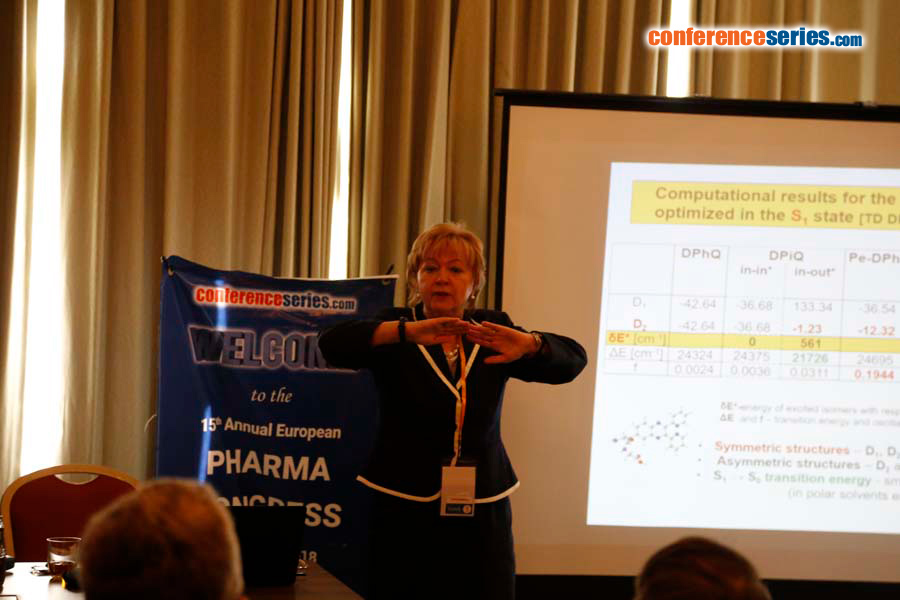
Anna Szemik-Hojniak
University of Wroclaw, Poland
Title: Dipeptides with a short side chains as potential drug candidates
Biography
Biography: Anna Szemik-Hojniak
Abstract
Quinoxaline and its derivatives are at the forefront of organic compounds with a wide range of biological activities (antibacterial, antiviral or anticancer properties). Recently, we synthesized dipeptides containing quinoxaline-derived amino acid side chains. They show a limited steric hindrance and may exist in numerous conformations. This property can be explored in pharmaceutical applications. In this talk, the results of experimental absorption and emission steady state and time-resolved spectroscopy along with theoretical (DFT) calculations on the synthesized dipeptides containing the 3-(quinoxalin-6-yl)alanine residue will be presented. These are: N-(3-(2, 3-diphenylquinoxaline-6-ylo)alanylo) glycine dipeptide [Pe-DPhQ] and diphenylquinoxaline (DPhQ) pair, as well as N-(3-(2, 3(pirydine-2-ylo) quinoxaline-6-ylo)alanylo) glycine dipeptide (Pe-DPiQ) and dipyridyl-iso-quinoxaline (DPiQ) pair. The DFT calculations reveal that Pe-DPiQ dipeptide is the most stable and may exist in three ground state optimized isomers. In this isomer, the OH...N hydrogen bond is present and the excited state proton transfer can occur. At room temperature, in highly polar solvents, emission (403 nm) decays bi-exponentially (τ1= 2.0 ns, τ2= 8.9 ns) while with lowering temperature, besides a weak fluorescence that is slightly redshifted (410 nm; 2.5 and 38.2 ns); also, the phosphorescence band at 495 nm (τ1=1.0 μs and τ2=9.0 μs) is observed. On the other hand, at elevated temperatures, a new broad, structurless and strongly red shifted fluorescence band (563 nm) appears (the Stokes shift ~12000 cm-1) suggesting the strong excited state charge transfer (CT) interactions. It’s origins from the isomer where one of the two pyridine side rings are more or less coplanar with respect to the quinoxaline plane. One may conclude that recognizing of the electronic structure, the CT and proton transfer abilities in the short peptides are highly important for explaining the splitting and conformational dynamics in proteins. This in turn allows treating such systems as novel groups of potential drug candidates.




